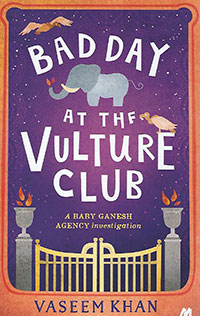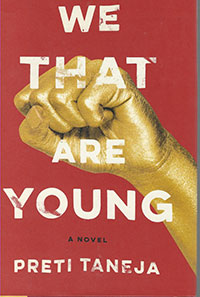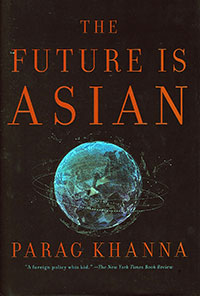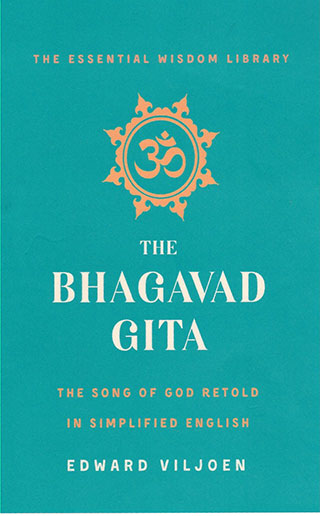
Books

 “Bad Day at the Vulture Club” (380 pages; $26.99) by Vaseem Khan; published by Mulholland Books (www.hodder.co.uk)
“Bad Day at the Vulture Club” (380 pages; $26.99) by Vaseem Khan; published by Mulholland Books (www.hodder.co.uk)
After “The Unexpected Inheritance of Inspector Chopra,” “The Perplexing Theft of the Jewel in the Crown” and “The Strange Disappearance of a Bollywood Star” comes another tale from Vaseem Khan. In the latest Baby Ganesh Detective Agency mystery series book, retired Inspector Ashwin Chopra solves the death of a wealthy and respected Parsee gentleman who is murdered on holy ground and his body dumped inside a Towers of Silence, where the Parsee dead are consumed by vultures. As always, he is aided by Baby Ganesh and ex-police colleague Rangwalla, who gets an intriguing sub-plot of his own. Then there is Irfan, former street urchin but now a bona fide Chopra family member. Not as visible as in previous books is Chopra’s charming wife Poppy, who has joined the Take the Poo to the Loo campaign to embrace the challenge of ending open defecation. She has put up a poster in the building complex depicting “a series of cartoons of an average-looking Indian man walking along the street, before stepping, with exaggerated disgust, into a pile of excrement.” This causes quite a ruckus, somewhat hilarious, with the president of the complex’s managing committee. Truly, Bombay, now Mumbai, comes back to life as in: “A shabby, twelve-storey tower in a rundown part of the mid-town Dadar district, the building, with its flaking grey walls, caged balconies, cheap advertising hoardings and thickets of snaking electrical and phone cables, looked severely ill, as if it had contracted some sort of debilitating architectural disease.” Our kudos go to Khan for yet another fascinating crime mystery. We eagerly await the next in the Baby Ganesh Detective Agency series.
 “Ghost Work: How to stop Silicon Valley from Building a New Global Underclass” (288 pages; $27) by Mary L. Gray and Siddharth Suri; published by Houghton Mifflin Harcourt (www.hmhco.com)
“Ghost Work: How to stop Silicon Valley from Building a New Global Underclass” (288 pages; $27) by Mary L. Gray and Siddharth Suri; published by Houghton Mifflin Harcourt (www.hmhco.com)
So you are surfing on Google. Or buying merchandise on Amazon. Maybe booking your hotel at expedia.com Good for you. But ever wonder: How does the gig world function so efficiently and smartly? That’s where the “ghost work” done by people behind the scenes comes into focus. It could be stressed young mothers, professionals forced into early retirement, recent grads that can’t get a footing on the traditional employment ladder, or minorities unable to find jobs. In other words, about 8 percent of Americans have worked at least once in this “ghost economy” and that number is growing, say Gray and Suri. The authors focused on nearly 200 in-person interviews with workers and 50 in-person chats with those hiring on-demand workers living in India and the United States, and examined four different ghost work platforms: Amazon.com’s Mechanical Tuk (MTurk); Microsoft’s internal Universal Human Relevance System (UHRS); socially minded LeadGenius; and the nonprofit Amara.org Unlike assembly workers of the past and some today, there are no health benefits or legal minimum pay set, and worse of all, these overworked and underpaid workforces can be fired for any reason or none whatsoever. Some in the gig economy have even reported not getting paid for the work or fighting a battle to collect wages. Lost amid the on-demand economy is that the workers have a tight social network, a connection, bond with their colleagues. The shadow of Artificial Intelligence looms but it is still not within reach of upsetting the applecart. Gray and Suri rightly call for a different set of benefits and safety nets for the new workforce, which isn’t your traditional 9-to-5 full-time job.
 “We That are Young” (490 pages, $27.95) by Preti Taneja; published by Alfred A. Knopf (www.aaknopf.com)
“We That are Young” (490 pages, $27.95) by Preti Taneja; published by Alfred A. Knopf (www.aaknopf.com)
If you are familiar with Shakespeare’s “King Lear,” then you will find the story similar, though set in modern India. Jivan Singh, bastard son of Devraj Bapuji, returns to his childhood home after 15 years in the United States – only to discover that the ageing patriarch of the Devraj Company he founded has unexpectedly resigned. Then there is Sita, Devraj’s youngest daughter, who flees – refusing to submit to the marriage her father wants for her. Meanwhile, Radha and Gargi, Sita’s older sisters, must deal with the consequences. Thus begins a fierce, deadly struggle for power, which spans from the luxury hotels and spas of New Delhi and Amritsar, the palaces, and slums of the fabled Napurthala, to Srinagar. The story, divided into five chapters (characters, rather), is related in meticulously written prose as the ever-expanding gap between the filthy rich and the extremely poor is laid bare before the reader. Be cautioned that like Salman Rushdie or Arundhati Roy novels, this one too requires attention and concentration, what with a complexly told storyline going back and forth and intertwined characters that will stoop to corruption, deceit and murder. Here are some catchy lines: “Confusion: the bastard half brother of chaos. Chaos: the torture instrument of forgetting.” “Sacrifice creates the heat that keeps the world turning. If no one sacrifices, the sun will not rise.” “Sin comes in many forms … It can be an act. Or a lack of action. It can be a lie or believing a liar. Doubt is one of the worst sins of all.” Be patient, take your time with the book and you will enjoy the nearly 500-page read. For a debut novel, Taneja shines even though the subjects (characters) are somewhat hollow and depressing.
 “The Future is Asian: Commerce, Conflict, and Culture in the 21st Century” (440 pages, $29.95) by Parag Khanna; published by Simon & Schuster (www.simonandschuster.com)
“The Future is Asian: Commerce, Conflict, and Culture in the 21st Century” (440 pages, $29.95) by Parag Khanna; published by Simon & Schuster (www.simonandschuster.com)
The title says it all. Forget the Europeanization and Americanization in the last two centuries. Welcome to Asianization in the 21st century! Apart from China and India, the multi-civilization order spans from Saudi Arabia to Japan, Russia to Australia, and Turkey to Indonesia. Khanna notes that’s five billion people linked through trade, finance, infrastructure and diplomatic networks and representing 40 percent of global GDP. Indeed, Asia is on the march though it has a long way to go. The author, out of ingenuousness or otherwise, appears all too excited about China's forays in Africa and its Belt & Road initiative but like all other nations, great and otherwise, the Asian giant is apparently looking at its own self-interest. Nobody can dispute the facts about Asia: has several of the world’s largest economies, most of the world’s foreign exchange reserves, 60 percent of the world’s population, half of the world’s largest countries by land area, most of the world’s 20 most populous countries, home to some of the wealthiest countries in the world on a per capita basis, and 30 percent of the world’s billionaires. Indeed, Khanna admits that though we are in the early phases of global Asianization, questions remain: “How will Asia manage the current wave of geopolitical, economic, social, and technological transformations? Will mixed capitalism, social conservatism, and technocratic governance remain a magic, elevating those societies that have not yet adopted it?” Though well-written and put together (especially the history of Asia), there were a handful of spelling/grammatical errors that slipped past the editor. And, at times, the author appears to be bashing the West, mainly the United States, but you have to hand it to him: “The Future is Asian.”
 “Friend of My Youth” (174 pages, $15.95) by Amit Chaudhuri; published by The New York Review of Books (www.nyrb.com)
“Friend of My Youth” (174 pages, $15.95) by Amit Chaudhuri; published by The New York Review of Books (www.nyrb.com)
Is it a travelogue? A memoir? A novel? We wouldn’t want to categorize this delightfully written book by one of our favorite authors Amit Chaudhuri (of “The Immortals” and “Odysseus Abroad” fame). The reader is taken on a journey of Bombay, which Chaudhuri visits for a reading. As he always does, he is keen to visit with his friend Ramu, who is in an intensive rehab program. Bombayites will relate to some of the landmarks such as the Taj Mahal hotel, now-defunct Rhythm House, Gateway of India, and Trishna and Britannia restaurants. He notes as he lands in the city, “I feel a sense of purposelessness – is it the ennui of the book tour or book-related visit? Not entirely. No, it pertains to Bombay, to being returned to a city where one performed a function, reluctantly. Reluctance is fundamental. You don’t plunge into growing up; it happens in spite of you.” Noting the imminent closure of the iconic music store in Kala Ghoda (Rhythm House), he shows indecisiveness “about the time we live in. This ongoing passage to oblivion. The disappearance of things you took for granted. Then there’s the renaissance of things you never knew of, or presumed you’d never see again.” Acknowledging that the title has been borrowed from Alice Munro’s short story, Chaudhuri insists that his book is a novel. “I’m pretty sure of that. What marks out a novel is this: the author and the narrator are not one. Even if, by coincidence, they share the same name. The narrator’s views, thoughts, observations – essentially, the narrator’s life – are his or her own. The narrator might be created by the author, but is a mystery to him. The provenance of his or her marks and actions is never plain.” To agree or disagree with the author, we suggest reading this compelling narrative. It’s a short, quick and fun read.
 “The Bhagavad Gita: The Song of God Retold in Simplified English” (120 pages, $14.99) by Edward Viljoen; published by St. Martin’s Essentials (www.stmartins.com)
“The Bhagavad Gita: The Song of God Retold in Simplified English” (120 pages, $14.99) by Edward Viljoen; published by St. Martin’s Essentials (www.stmartins.com)
Think you know The Bhagavad Gita but need some clarifications on the dialogue between Lord Krishna and Prince Arjuna? Or maybe would like to share this timeless source of wisdom with a non-Indian friend? Then this book written in simple, concise English as title suggests can be a great primer for a first-time reader. The treasure of the Gita is “… that in reading it we are led to discover who we truly are, so that when we perform our duty in the world – whether that is to feed the hungry, protect the vulnerable, speak up for those who cannot speak for themselves, love our neighbors, or raise our children – we do it all with a steady focus on the presence of the indwelling Self, the Lord of Love, within ourselves and within all beings,” writes Viljoen. Other helpful chapters include a who’s who character list, glossary of important terms, and exploring the back story from the Mahabharata and the impact and meaning of the Gita itself. A doctor of Religious Science, the author acknowledges he wrote the book not as an expert but as a devotee. Our kudos to Viljoen for bringing one of the most beautiful scriptures to life in its truest, simplest form.
 “No Beast So Fierce: The Terrifying True Story of the Champawat Tiger, the Deadliest Animal in History” (304 pages, $26.99) by Dane Huckelbridge; published by William Morrow (www.hc.com)
“No Beast So Fierce: The Terrifying True Story of the Champawat Tiger, the Deadliest Animal in History” (304 pages, $26.99) by Dane Huckelbridge; published by William Morrow (www.hc.com)
Here are the facts, according to Dane Huckelbridge in this gripping tale. Bengal tigers are big, females can be about 400 pounds, males close to 500 pounds, and one man-eater shot in 1967 weighed at 857 pounds. They are also fast, reaching 40 mph. Bengal tigers are strong, capable of exerting about a 1,000 pounds of pressure per square inch. And they are smart, using intelligence to stalk a prey while dodging detection. They are known to kill 15-foot crocodiles, 20-foot pythons, 3,000-pound rhinos, as well as harbor seals and elephants. It was one such animal, the Champawat Tiger, who is documented to have killed more than 400 humans in India and Nepal between 1900 and 1907. Shot in the mouth by a poacher in the foothills of the Himalayas, the Bengal tigress petrified locals as its killing spree continued for seven years. It was then that the British called in a railroad employee Jim Corbett to track and slay the man-eater. It is this mesmerizing man-beast encounter that Huckelbridge narrates quite brilliantly in the book. “Twenty rugged Pahari hills men, six porters from Nainital, and one khaki-clad Englishman, all banded together in a common purpose,” writes the author as the search continued for the Champawat Tiger. The hunter may have killed the Champawat and other tigers but later on he transformed into a huge conservationist, dedicated to saving the Bengal tiger and its habitat. No wonder, the 1,200-kilometer Corbett Tiger Reserve, India’s oldest and most prestigious national park, bears his name. This well-recounted account of the duel between man vs. beast is a fitting tribute to Jim Corbett and the Bengal tiger.